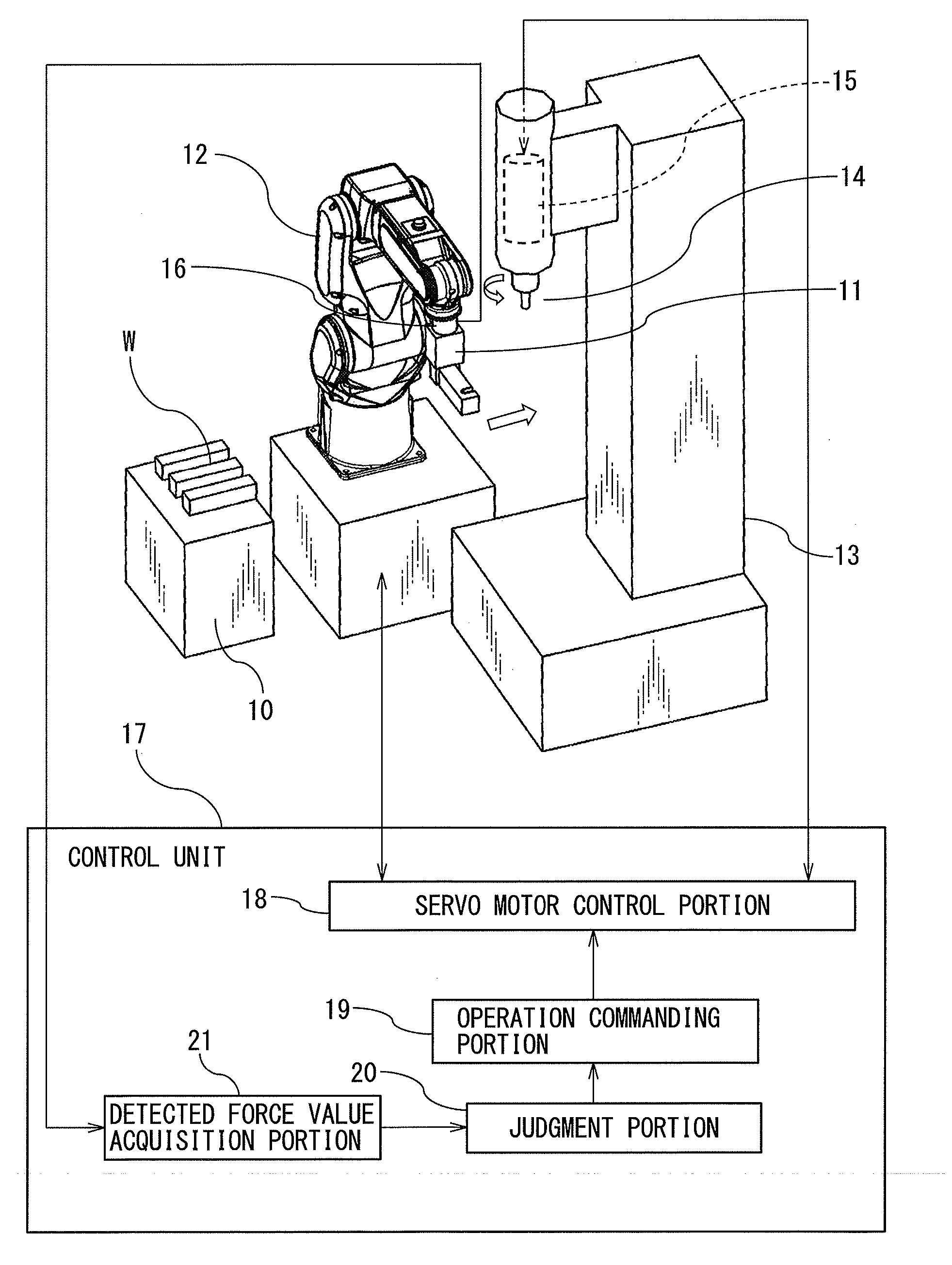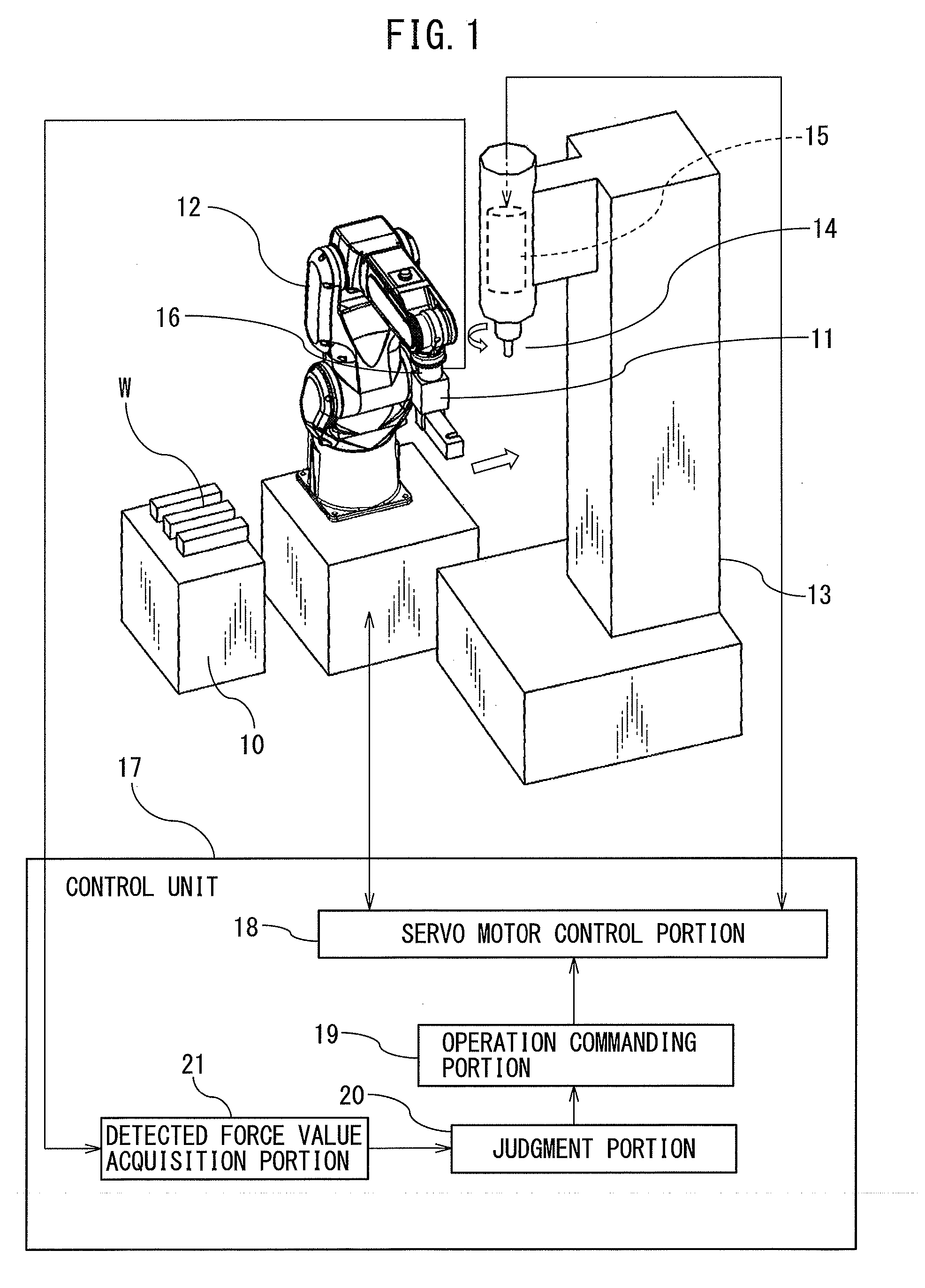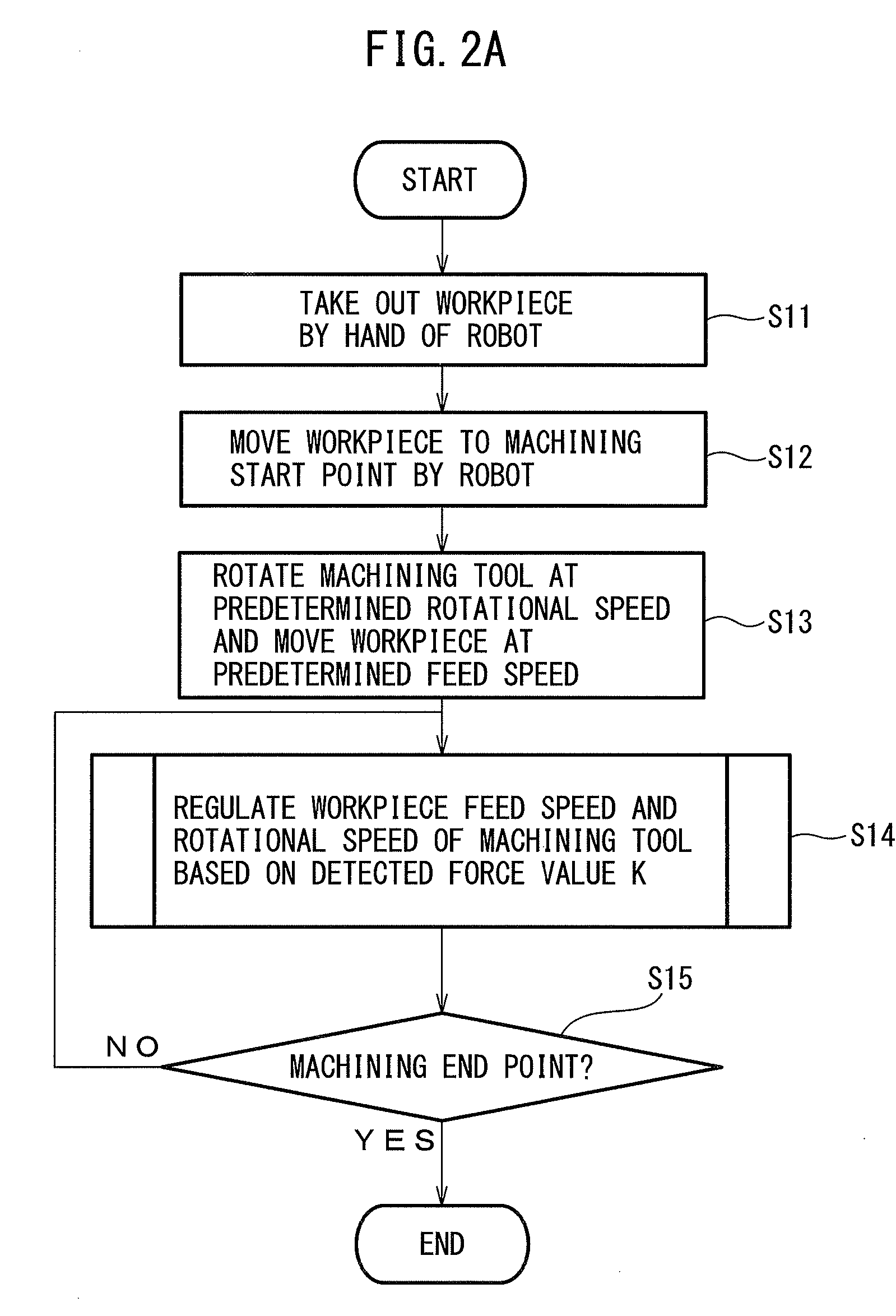Machining system for adjusting number of revolutions of machining tool and feed speed of workpiece
- Summary
- Abstract
- Description
- Claims
- Application Information
AI Technical Summary
Benefits of technology
Problems solved by technology
Method used
Image
Examples
first embodiment
[0026]FIG. 1 shows a structure of the machining system according to the first embodiment.
[0027]The machining system according to the first embodiment comprises a workpiece stage 10 which places a workpiece W at a predetermined position, a robot 12 having a hand 11 attached to an arm tip thereof to grip the workpiece W, and a processing machine 13 installed in the range of movement of the hand 11 of the robot 12. The robot 12 is a multi-articulated vertical manipulator. The processing machine 13 has a machining tool 14 by which the workpiece W is machined, and a machining tool servo motor 15, which is incorporated in the spindle which rotates the machining tool 14.
[0028]In the present invention, a cutter, grinder, or an end mill, etc., is used as the machining tool 14 to perform a machining process, such as burring, polishing or grinding on the workpiece W. After the workpiece W on the workpiece stage 10 is grasped by the hand 11 of the robot 12, the grasped workpiece W is moved to t...
second embodiment
[0053]Next, the second embodiment will be discussed below. The same components as those in the first embodiment are assigned the same reference numerals and no duplicate explanation thereof will be given hereinafter. Only the components different from those in the first embodiment will be described below.
[0054]FIG. 3 shows the structure of the machining system according to the second embodiment.
[0055]In the first embodiment illustrated in FIG. 1, the force sensor 16 is provided at the wrist portion between the arm tip of the robot 12 and the hand 11. However, the force sensor 16 may be provided on not the robot 12 but the processing machine 13.
[0056]Namely, in the second embodiment, the force sensor 16 is provided on the spindle of the processing machine 13 as shown in FIG. 3. More specifically, the force sensor 16 is arranged between the servo motor 15 for the machining tool and the machining head 22 which is rotated by the machining tool servo motor 15. The machining tool 14 is de...
third embodiment
[0059]The third embodiment will be discussed below. The same components as those in the first embodiment are assigned the same reference numerals and no duplicate explanation thereof will be given hereinafter. Only the components different from those in the first embodiment will be described below.
[0060]FIG. 4 shows the structure of the machining system according to the third embodiment.
[0061]In the third embodiment, the control unit 17 includes therein a frequency analyzing portion 23, as shown in FIG. 4.
[0062]More specifically, the frequency analyzing portion 23 performs a frequency analysis, e.g., FFT (Fast Fourier Transform) analysis of the history of the detected force value K of the force sensor 16 which is monitored by the detected force value acquisition portion 21. The frequency analyzing portion 23 resolves the records of the detected force value K of the force sensor 16 into a plurality of frequency components by the FFT analysis and extracts a specific frequency componen...
PUM
 Login to View More
Login to View More Abstract
Description
Claims
Application Information
 Login to View More
Login to View More - R&D
- Intellectual Property
- Life Sciences
- Materials
- Tech Scout
- Unparalleled Data Quality
- Higher Quality Content
- 60% Fewer Hallucinations
Browse by: Latest US Patents, China's latest patents, Technical Efficacy Thesaurus, Application Domain, Technology Topic, Popular Technical Reports.
© 2025 PatSnap. All rights reserved.Legal|Privacy policy|Modern Slavery Act Transparency Statement|Sitemap|About US| Contact US: help@patsnap.com



